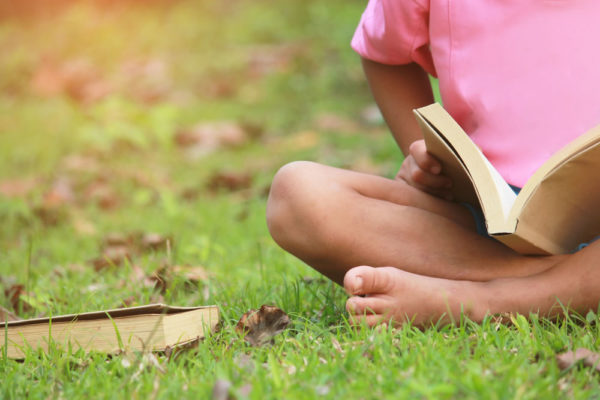What do you picture when you think of a librarian? If you have an image in mind of this little old woman, stamping books in her half-rimmed glasses, then you would be one of many still drawing on this archetype. Many people today would be surprised by how much librarians have shifted from the stereotype I just described. In fact, we’ve changed so much that the title “librarian” barely applies anymore.
Now, with so much technology as an interwoven part of a library’s infrastructure, my fellow ex-librarians and I are more frequently referred to as “media specialists,” though I sometimes go by “library media specialist” to help people gradually adjust to the new identity.
As a media specialist at Southside Middle School in Tallassee, Alabama, my responsibility is to oversee the distribution and use of most of our school’s technology—both in the library and out. Much of this tech is already integrated into the classroom environment, with every teacher having their own smartboard and projectors and all the middle schoolers in the district carrying their own iPads as part of our new 1:1 program.
It’s safe to say that both the environment and expectations for library media specialists have certainly changed, but what’s remained true is our mission to break down the barriers that stand between our students and their reading. Here are three ways I am supporting literacy throughout the school.
1. Combining Print and Digital Books
When I made the shift from a librarian to a media specialist, the transition required me to keep an open mind when it came to balancing traditional print media with the new digital resources. I still enjoy reading books the old-fashioned way, as do many of our students, but I also understand the value of having a vast array of texts readily available through a digital library on school-issued iPads and MacBooks.
In order to keep students fully engaged and reading both in and out of the library, we use several digital literacy programs, including Epic! and Reading Horizons. We use Epic! with our accelerated readers, granting them access to loads of books to download onto their devices and read on the go. Reading Horizons helps us with some of our Response to Intervention (RTI) students, providing them with additional reading and foundational phonics through a vast array of books and instructional lessons that they can access any time they like. Both platforms were used primarily with our fifth and sixth graders.
This new level of access to reading was wonderfully effective for out-of-class student engagement, but we wanted our kids to know that the library, and the physical books we carry, still remain a valuable resource. Through a partnership with ABDO and Bearport Publishing, two of our digital partners, we were able to offer our students the opportunity to interact both physically and digitally with the books they wanted to read. Each Capstone book came with a QR code printed on its cover. After scanning each book and making laminated prints of the coded covers, our students now have the ability to come into the library, scan the code with their iPad, and instantly have the book downloaded for them to read.
This allowed us to share one book with any child interested to read it, while still bringing them into the library to see what other print options were available or of interest to them. With these tools and approach, we’re able to grant access to a multitude of books both in print and digital form to best serve our student’s needs.
(Next page: 2 more ways to break down reading barriers)
2. Using Technology to Support Struggling Readers
Helping our children improve their reading skills has been a top priority since media specialists were still librarians. Even with all the tech tools at their disposal, some children still struggle with basic reading foundations. Before tools like these were available, I couldn’t always guarantee time for one-to-one instruction with all the young readers who needed my help. Having an instructional reading tool that effectively extends my reach so that all my students have the assistance they need—in a variety of formats.
Our kids who use the Reading Horizons software receive one-to-one instruction from both their teachers and the program. With their device, they can read or choose to have lessons read aloud to best support their growth. Through the software’s digital assessment tools, I can check in on the progress each student is making and feel assured that they’re okay to work independently on their iPad while I’m assisting other students. The reading games they play and the rewards they receive provide a level of engagement that inspires their interest and confidence to keep reading and keep improving.
3. Collaborating with Teachers
The use of digital programs to assist in RTI instruction is helping build a stronger bridge of collaboration between teachers and media specialists, where before our interactions were more commonly divided. In helping students and teachers integrate digital libraries and reading aids into their daily curriculum, my presence and assistance is bridging the gap between the library environment and the rest of the school, bringing my work into the classrooms to help facilitate stronger learning techniques where media specialists can become more involved with all of our students in every aspect of reading.
More cohesive collaboration between media specialists and teachers means more opportunity for future leadership roles within the school community, helping media specialists continue to evolve and improve their educational status.
In order to cross these divides, media specialists are becoming more tech-savvy than ever before. If we are to keep up with our 21st-century students, the library and its staff must evolve with them, always looking to the new horizons in student reading and engagement.
- How digital tools and AI can enhance social studies - April 23, 2024
- Using universal screening to improve student well-being - April 22, 2024
- 3 ways to avoid summer learning loss - April 19, 2024


